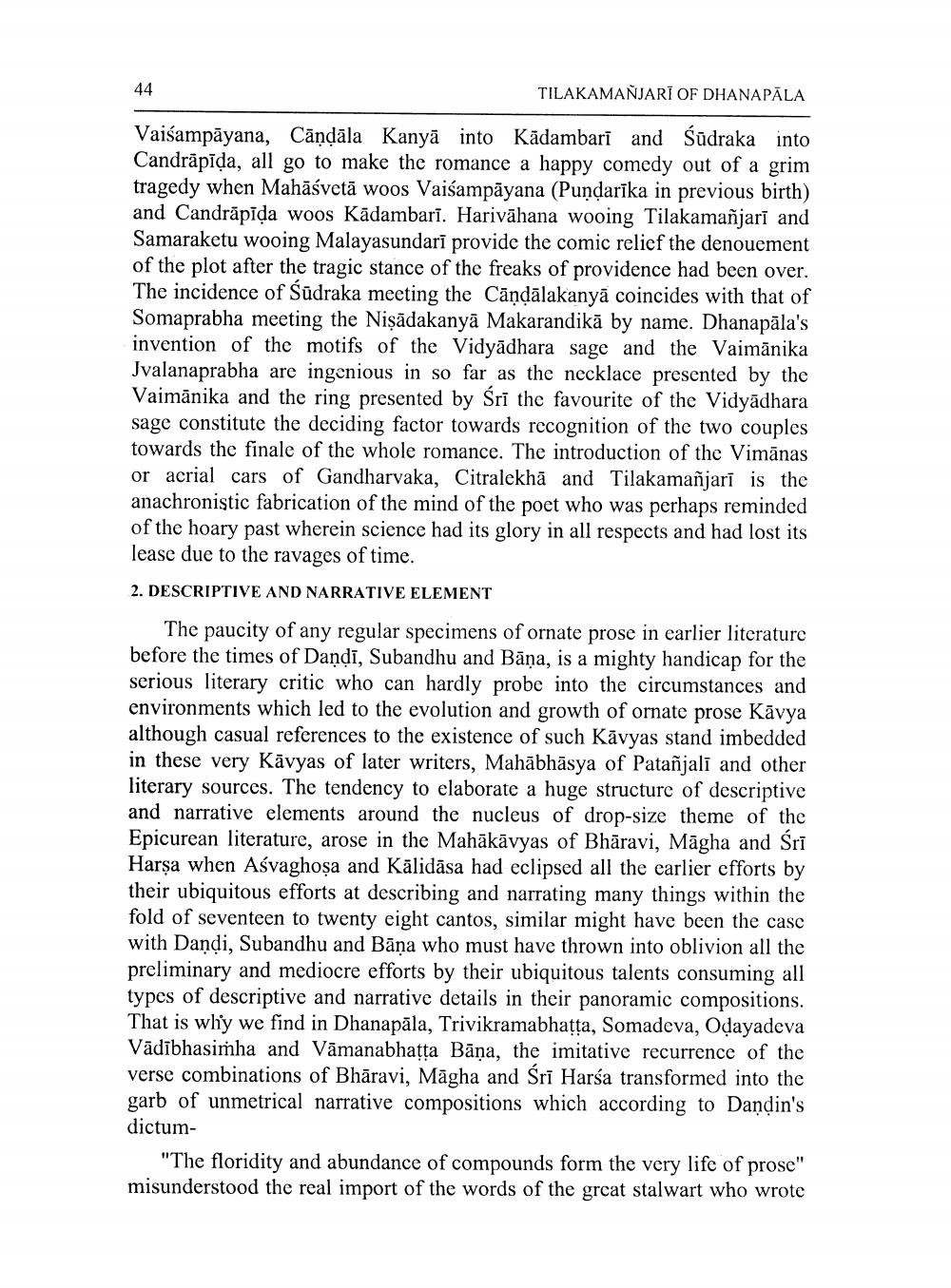________________
44
TILAKAMANJARĪ OF DHANAPĀLA
Vaišampāyana, Cāndāla Kanyā into Kādambari and Sūdraka into Candrāpīda, all go to make the romance a happy comedy out of a grim tragedy when Mahāśvetā woos Vaišampāyana (Pundarīka in previous birth) and Candrāpida woos Kādambari. Harivāhana wooing Tilakamañjarī and Samaraketu wooing Malayasundarī provide the comic relief the denouement of the plot after the tragic stance of the freaks of providence had been over. The incidence of Sūdraka meeting the Cāņdālakanyā coincides with that of Somaprabha meeting the Nişādakanyā Makarandikā by name. Dhanapāla's invention of the motifs of the Vidyādhara sage and the Vaimānika Jvalanaprabha are ingenious in so far as the necklace presented by the Vaimānika and the ring presented by Srī the favourite of the Vidyādhara sage constitute the deciding factor towards recognition of the two couples towards the finale of the whole romance. The introduction of the Vimānas or acrial cars of Gandharvaka, Citralekhā and Tilakamañjarī is the anachroniştic fabrication of the mind of the poet who was perhaps reminded of the hoary past wherein science had its glory in all respects and had lost its lease due to the ravages of time. 2. DESCRIPTIVE AND NARRATIVE ELEMENT
The paucity of any regular specimens of ornate prose in earlier literature before the times of Dandī, Subandhu and Bāna, is a mighty handicap for the serious literary critic who can hardly probe into the circumstances and environments which led to the evolution and growth of ornate prose Kāvya although casual references to the existence of such Kāvyas stand imbedded in these very Kávyas of later writers, Mahābhāsya of Patañjali and other literary sources. The tendency to elaborate a huge structure of descriptive and narrative elements around the nucleus of drop-size theme of the Epicurean literature, arose in the Mahākāvyas of Bhāravi, Māgha and Sri Harșa when Asvaghoșa and Kālidāsa had eclipsed all the earlier efforts by their ubiquitous efforts at describing and narrating many things within the fold of seventeen to twenty eight cantos, similar might have been the case with Dandi, Subandhu and Bāņa who must have thrown into oblivion all the preliminary and mediocre efforts by their ubiquitous talents consuming all types of descriptive and narrative details in their panoramic compositions. That is why we find in Dhanapāla, Trivikramabhatta, Somadeva, Odayadeva Vādībhasimha and Vāmanabhatta Bāna, the imitative recurrence of the verse combinations of Bhāravi, Māgha and Sri Harsa transformed into the garb of unmetrical narrative compositions which according to Dandin's dictum
"The floridity and abundance of compounds form the very life of prose" misunderstood the real import of the words of the great stalwart who wrote




